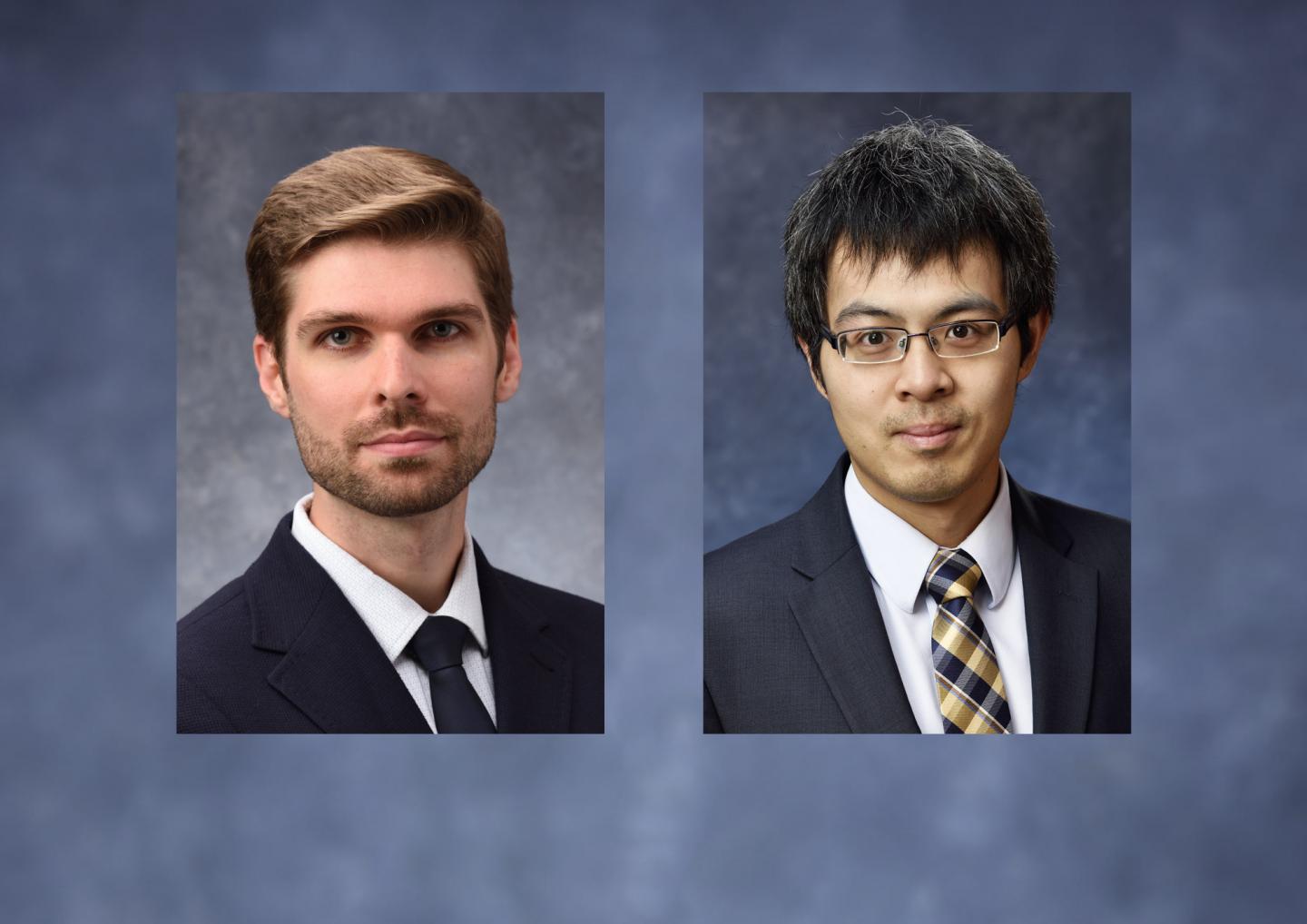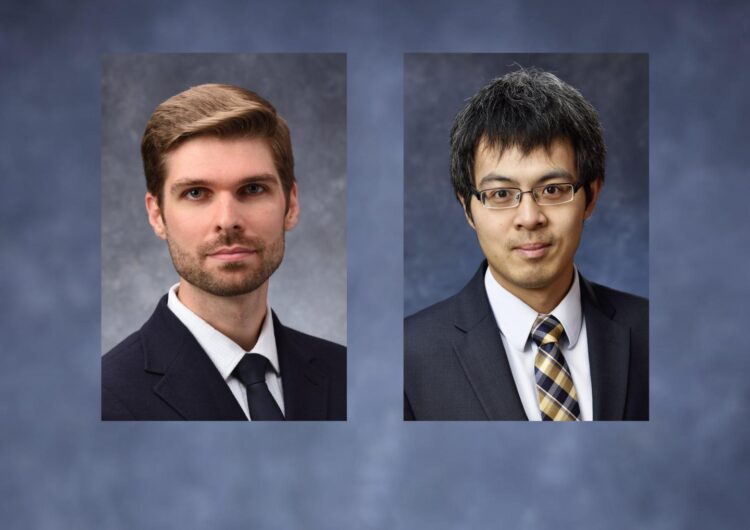Pitt professors receive nearly $400K from NSF to develop improved phase-change memory storage device

Credit: University of Pittsburgh
The ability to tune the optical properties of materials is the key to many of the technologies we rely on everyday, like phone displays and fiber internet. For new applications, like high-speed computing and advanced optical storage, a new group of materials–known as phase-change materials–is especially promising.
The University of Pittsburgh’s Nathan Youngblood and Feng Xiong, assistant professors of electrical and computer engineering, have received $380,000 from the National Science Foundation (NSF) to study phase-change materials and overcome the challenges inherent in the technology.
Phase-change materials consist of a layer of atoms that can be individually manipulated. Heating these materials causes them to switch between two or more stable states, where the atoms are either randomly positioned, like in glass, or ordered, like in a crystal. Importantly, the change is reversible, which allows it to be rewritten over and over, an aspect crucial to analog computing and deep learning applications.
Optical memory, like a DVD, uses lasers to write and read information in a phase-change material. This project would combine optical readouts with electrical controls, using electrical currents to generate heat and encode information.
“Other attempts to create an electrically-controlled optical memory device have resulted in short life-cycles, failing after 1,000 cycles. Blending the two technologies is a challenge, but it’s necessary for real-world applications,” explained Youngblood, who is the principal investigator on the project at Pitt’s Swanson School of Engineering. “This project will help us understand how to overcome those challenges.”
The team will investigate the role of heat and mechanical expansion in the layers that make up these devices, and they will use high-resolution imaging to study the role of migration of atoms and the effect that has on reversibility of the materials. The pair also received a $501,953 NSF award earlier this year for their work investigating how light affects two-dimensional phase-change materials for use in improved storage devices.
“One of the bigger issues we’re addressing is how many times they can reverse and repeat the memory storage process,” said Xiong. “Computing memory needs to do many cycles, and if we’re using electrical phase change memory, you can achieve an endurance performance of about 108 cycles – or a hundred million – times. But with current technologies combining electrical control and optical readouts, instead of one hundred million, it’s reduced to just a few thousand cycles before it starts to degrade.”
Though these materials’ primary use is for storage, Youngblood and Xiong say their work can potentially also be used for optical devices with a coating that can be controlled, like a lens or screen that can perform calculations on the optical information passing through it.
“This technology would be useful not only for storage but also for tenable optical components, like electrical interfaces,” said Youngblood. “If we are able to create memory cells that we can control electrically, we can apply the same technology to optical devices, like mirrors or lenses, with a coating that users can control.”
The project, titled “High Endurance Phase-Change Devices for Electrically Reconfigurable Optical Systems,” began in August 2020 and is expected to last three years.
###
Media Contact
Maggie Pavlick
[email protected]
Original Source
https:/





